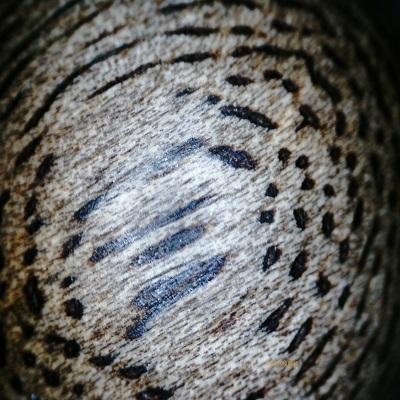Menu
-
-
F.A.Q
- How to identify genuine agarwood chip, natural or cultivated
- How to identify oil injection / absorption fake agarwood beads
- How to know if there are more than one oil in your oil
- How to make your wood bracelet or mala darker
- How to tell if an Agarwood bead sinks WITHOUT sinking it under water?
- How does back flow incense work and how do you burn it?
- Where to start if you don't know what agarwood is ?
- Why are you losing money if you buy seeds and plants?
- Which agarwood incense should I choose?
- Frequently Asked Questions
- Agarwood Related Articles
- Shipping
-
SHOP - Agarwood
-
SHOP - Other Fragrant Wood
-
SHOP - Incense Holder and Burner
-
- FREE Oud Oil guide
- Testimonials
- "Why did you buy this?"
- Contact us
- About Us
- +61430284329
- Login
-
English


How to identify Agarwood or infected Aquilaria?
August 09, 2018 3 min read
Let's examine the anatomical features of agarwood.

We are looking for the " Island-type included phloem" and the distinctive " pore" pattern.
Source Mohamed (2016, p28) Agarwood Science Behind the Fragrance
Do you wonder how its anatomy looks in real life? Please see below
When you know what to look for, don't be afraid to have a go. See the below agarwood chip? Can you identify the phloem and the pore?
So what are phloem and pore?
In short, phloem is the dark resinated park, and the pore is the yellow, fibrous part.
Phloem parts are excellent for heating, or incense making while pore parts are ideal for oil distillation. Let's take a closer look.

Can you see the phloem and pore of the agarwood now?
So that is for general agarwood chips or log (Aquilaria only, as Gyrinops, may have a different structure)
If you are still in doubt, bring a heating device with you, the smell is hard to deceive. Once you smell the genuine one, you will know the fraudulent smell quickly. Shoyeido Kodutu is an excellent portable; battery operated incense heater, ideal for testing. You can get it per below
So with Agarwood beads what to look for?
With cultivated agarwood beads, especially young ones, there is not much resin (phloem) but pore (transitional state to resin)

Under a microscope, see the yellow fibrous part?
Although the colour of the beads is not appealing (you know everyone loves darker heavier beads), the scent is light medicinal woody, not bad for a $25 bracelet.
How about wild agarwood beads? How to identify a genuine one?
Let's start with the mala 108 Agarwood (Gyrinops)
By now, you can tell these beads were made from a much older log and the age of infection is much longer. Can you spot the "phloem and pore" from the above beads? If the above image is not so clear, you can check out the below: A cylinder tube wild agarwood:
From the above pictures, this agarwood tube was made from the wild material; the resin was unevenly distributed one side contains more oil pore while the other side contains mainly resin.
How about this one?
If you love black, or dark, heavy beads, you need to be aware of the below. Well, who does not like darker beads? Read on
It is so black which is not a good sign; genuine agarwood need to contain golden fibrous part and dark stripe (resinous part). Why is it black? In the market, it is called " Black Agarwood" or " Rare agarwood" or even " Ky Nam".
Ready for the answer: IT IS OIL-SUBMERGED beads either by pressure or needle injection. It may be genuine agarwood, but it was "interfered" to inflate the price. The aim here is to look darker and heavier.
I saw bipolar beads. What does it mean?

These kind of beads are genuine. Why? Again, it contains phloem and oil pore per the images and visible. Authentic stuff no question asked. Its appearance is interesting. How does it achieve this weird, unique look?
The answer is cultivated agarwood bead. Please note not all cultivated beads have this appearance.
Agarwood only forms near or around the wounded parts. It is essentially a defence mechanism of the Aquilaria or Gyrinops trees, a biological feature.
With cultivated agarwood, nailing and inoculation method are used, and agarwood only forms around the injured part (around the nail to be exact). The white area is a bit further from the wound, hence little or none agarwood was formed.
Leave a comment
Comments will be approved before showing up.
Also in News

What is Tasbih? The Deep Meaning of Subhan Allah and the Role of Prayer Beads
November 09, 2025 4 min read











